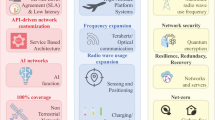Abstract
With the evolution of the Internet of Things (IoT) several users take part in different applications via sensors. The foremost confront here remains in selecting the most confidential users or sensors in the edge computing system of the IoT. Here, both the end-users and the edge servers are likely to be malicious or compromised sensors. Several works have been contributed to identifying and isolating the malicious end-users or edge servers. Our work concentrates on the security aspects of edge servers of IoT. The Frank-Wolfe Optimal Service Requests (FWOSR) algorithm is utilized to evaluate the boundaries or limits of the logistic regression model, in which the convex problem under a linear approximation is solved for weight sparsity (i.e. several user requests competing for closest edge server) to avoid over-fitting in the supervised machine learning process. We design a Frank Wolfe Supervised Machine Learning (FWSL) technique to choose an optimal edge server and further minimize the computational and communication costs between the user requests and the edge server. Next, Dirichlet Gaussian Blocked Gibbs Vicinity-based Authentication model for location-based services in Cloud networks is proposed. Here, the vicinity-based authentication is implemented based on Received Signal Strength Indicators (RSSI), MAC address and packet arrival time. With this, the authentication accuracy is improved by introducing the Gaussian function in the vicinity test and provides flexible vicinity range control by taking into account multiple locations. Simulation and experiment are also conducted to validate the computational cost, communication cost, time complexity and detection error rate.









Similar content being viewed by others
Data availability
There is no availability of data or materials available or report for the manuscript.
References
Aditya Sai Srinivas Thuluva, Manivannan Sorakaya Somanathan, Ramasubbareddy Somula, Sankar Sennan, Daniel Burgos (2021) Secure and efficient transmission of data based on Caesar Cipher Algorithm for Sybil attack in IoT”, EURASIP Journal on Advances in Signal Processing, 2021(38). https://doi.org/10.1186/s13634-021-00748-0
Adi E, Anwar A, Baig Z, Zeadally S (2020) Machine learning and data analytics for the IoT. Neural Comput Appl 32(20):16205–16233. https://doi.org/10.1007/s00521-020-04874-y
Alahakoon D, Nawaratne R, Xu Y, Silva DD, Sivarajah U, Gupta B (2020) Self-Building Artificial Intelligence and Machine Learning to Empower Big Data Analytics in Smart Cities, Information Systems Frontiers. Springer. https://doi.org/10.1007/s10796-020-10056-x
Badii, C, Bellin, P, Difini, A, Nesi, P (2020) Smart City IoT Platform Respecting GDPR Privacy and Security Aspects, IEEE Access, Vol 8. https://doi.org/10.1109/ACCESS.2020.2968741
Batalla JM, Gonciarz F (2018) Deployment of smart home management system at the edge: mechanisms and protocols. Neural Comput Appl Springer 31:1301–1315. https://doi.org/10.1007/s00521-018-3545-7
Hsu R-H, Lee J, Quek TQS, Chen J-C (2018) Reconfigurable Security: Edge-Computing-Based Framework for IoT. IEEE Network 32(5):92–99
Jararweh Y, Otoum S, Ridhawi IA (2020) Trustworthy and sustainable smart city services at the edge. Sustain Cities Soc, Elsevier. https://doi.org/10.1016/j.scs.2020.102394
Karthick, S (2018) TDP: A novel secure and energy aware routing protocol for wireless sensor networks. Int J Intell Eng Syst 11(2):76–84. https://doi.org/10.22266/ijies2018.0430.09
Laguduva, VR, Katkoori, S, Karam, R (2020) Machine learning attacks and countermeasures for puf-based iot edge node security. SN Comput Sci. https://doi.org/10.1007/s42979-020-00303-y
Ma, Z, Liu, Y, Liu, X, Ma, J, Li, F (2019) Privacy-preserving Outsourced Speech Recognition for Smart IoT Devices, IEEE Int Things J, 6(5)
Mishra, D, Dharminder, Yadav, P, Rao, YS, Vijayakumar, P, Kumar, N (2020) A provably secure dynamic ID-based authenticated key agreement framework for mobile edge computing without a trusted party. J Inf Secur Appl, Elsevier. https://doi.org/10.1016/j.jisa.2020.102648
Pajouh HH, Khayami R, Dehghantanha A, Choo K-KR, Parizi RM (2020) AI4SAFE-IoT: an AI-powered secure architecture for edge layer of Internet of things. Neural Comput Appl Springer 32(20):16119–16133. https://doi.org/10.1007/s00521-020-04772-3
Rahman, MA, Rashid, MM, Hossain, MS, Hassanain, E, Alhamid, MF, Guizani, M (2019) Blockchain and IoT-based cognitive edge framework for sharing economy services in a smart city, IEEE. https://doi.org/10.1109/ACCESS.2019.2896065
Rostampour, S, Safkhani, M, Bendavid, Y, Bagheri, N (2020) ECCbAP: A secure ECC based authentication protocol for IoT edge devices. Pervasive Mob Comput, Elsevier. https://doi.org/10.1016/j.pmcj.2020.101194
Sha K, Yang TA, Wei W, Davari S (2020) A survey of edge computing-based designs for IoT security. Digital Commun Netw 6(2):195–202. https://doi.org/10.1016/j.dcan.2019.08.006
Singh S, Sulthana R, Shewale T, Chamola V, Benslimane A, Sikdar B (2022) Machine Learning Assisted Security and Privacy Provisioning for Edge Computing: A Survey. Article in IEEE Int Things J 9(1):236–260. https://doi.org/10.1109/JIOT.2021.3098051
Upadhyaya B, Sun S, Sikdar B (2019) Machine Learning-based Jamming Detection in Wireless IoT Networks. IEEE VTS Asia Pacific Wirel Commun Symp (APWCS). https://doi.org/10.1109/vts-apwcs.2019.8851633
Wang, B, Li, M, Jin, X, Guo, C (2020) A Reliable IoT Edge Computing Trust Management Mechanism for Smart Cities, IEEE Access, Vol 8. https://doi.org/10.1109/ACCESS.2020.2979022
Xu Z, Liu W, Huang J, Yang C, Lu J, Tan H (2020) Artificial Intelligence for Securing IoT Services in Edge Computing: A Survey, Security and Communication Networks. Wiley. https://doi.org/10.1155/2020/8872586
Funding
There is no funding provided to prepare the manuscript.
Author information
Authors and Affiliations
Corresponding author
Ethics declarations
Ethical Approval
This article does not contain any studies with human participants or animals performed by any of the authors.
Informal Consent
Informed consent was obtained from all individual participants included in the study.
Consent to participate
There is no consent to participate or any concerns in the manuscript.
Consent to Publish
There is no consent or any copyright needed to get concerns in the manuscript.
Conflict of Interest
There is no conflict of Interest between the authors regarding the manuscript preparation and submission.
Additional information
Publisher's Note
Springer Nature remains neutral with regard to jurisdictional claims in published maps and institutional affiliations.
Rights and permissions
Springer Nature or its licensor (e.g. a society or other partner) holds exclusive rights to this article under a publishing agreement with the author(s) or other rightsholder(s); author self-archiving of the accepted manuscript version of this article is solely governed by the terms of such publishing agreement and applicable law.
About this article
Cite this article
Sangeethapriya, J., Arock, M. & Reddy, U.S. Secured Frank Wolfe learning and Dirichlet Gaussian Vicinity based authentication for IoT edge computing. Peer-to-Peer Netw. Appl. (2024). https://doi.org/10.1007/s12083-024-01667-1
Received:
Accepted:
Published:
DOI: https://doi.org/10.1007/s12083-024-01667-1




